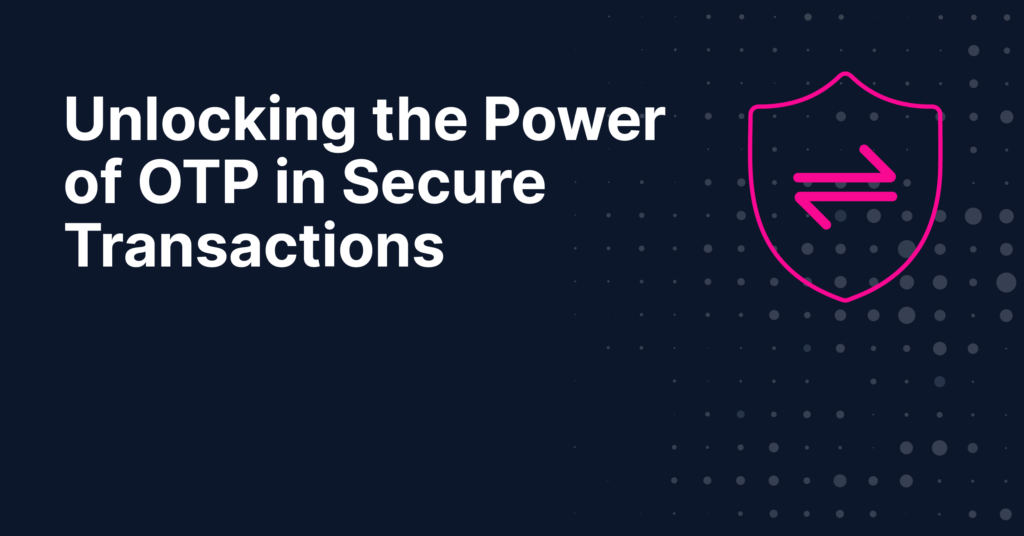One-Time Passwords (OTP) have become a cornerstone in securing digital transactions against a backdrop of rising cyber threats. This article delves into the mechanics of OTP, shedding light on its pivotal role in fortifying online transactions against unauthorized access.
You will gain comprehensive insights into the generation and application of OTPs, understand their benefits over traditional security measures, and explore the best practices for OTP implementation.
By the end of this read, the critical importance of OTP in modern digital security frameworks and its impact on safeguarding personal and financial information in the digital realm will be clear, empowering you with knowledge to better protect your digital interactions.
1. What are One-Time Passwords (OTP)?
One-Time Passwords (OTP) are unique, temporary codes used for authenticating a user during a single transaction or login session. Unlike static passwords, OTPs are dynamically generated and expire after a short period, greatly reducing the risk of unauthorized access. This method relies on algorithms that produce a new password based on a shared secret, time synchronization between the authentication server and the user’s device, or a counter mechanism.
OTPs can be delivered via SMS, email, or dedicated authentication apps, offering an added layer of security by ensuring that only the intended recipient can access the sensitive information or complete the transaction.
2. The Role of OTP in Digital Security
The role of One-Time Passwords (OTP) in digital security is instrumental, acting as a critical layer of defense against the increasing threats of cyber-attacks and data breaches. OTPs enhance the security of digital transactions and online accounts by requiring a second form of verification beyond just a username and password.
This two-factor authentication (2FA) process significantly mitigates the risk of unauthorized access, as the temporary nature of OTPs makes them useless to attackers after a short period or once used. Employed in various contexts, from banking to social media, OTPs safeguard sensitive data by ensuring that only the legitimate user can perform critical actions, such as logging in or approving transactions, thereby maintaining the integrity and confidentiality of personal and financial information in the digital space.
3. Benefits of Using OTP
-
- Enhanced Security: Adds an extra layer of security through two-factor authentication, reducing the risk of unauthorized access.
- Protection Against Phishing: Dynamically generated codes are effective against phishing attempts, as they are only valid for a single use.
- User Convenience: Simplifies the login process with secure, easily accessible codes sent to the user’s mobile device.
- Reduced Data Breach Risk: Even if the primary password is compromised, the OTP requirement prevents unauthorized access.
- Improved Verification: Offers a reliable method for verifying user identity during transactions or access requests.
In essence, OTPs strike a balance between robust security measures and user-friendly verification, making them an invaluable tool in protecting online identities and sensitive data.
4. Implementing OTP in Digital Transactions
Implementing OTP in digital transactions involves integrating a system that generates and sends a unique, time-sensitive code to the user’s mobile device or email. This process starts when a transaction is initiated, requiring additional authentication.
The OTP system then automatically creates a code and dispatches it to the user, who must enter this code to proceed. This step ensures that only the person with access to the registered device or email can confirm and complete the transaction, significantly enhancing security.
For businesses looking to incorporate OTP systems, leveraging APIs that interface with SMS or email services for seamless code distribution is crucial. Javna provides robust API solutions specifically designed for this purpose, enabling organizations to implement OTP effortlessly. By integrating Javna’s technology, businesses can enhance transaction security and build customer trust by ensuring data and financial information are protected. Javna’s solutions are tailored for scalability and reliability, making it an ideal choice for any organization aiming to secure its digital transactions with OTP.
5. Use Cases for OTP in various industries
OTP (One-Time Password) implementation spans various industries, enhancing security and user verification processes:
-
- Retail and E-commerce: For secure online transactions and customer account verification, preventing unauthorized access and fraudulent purchases.
- Banking and Finance: Essential for secure online banking operations, including fund transfers, bill payments, and accessing sensitive financial information.
- Travel and Hospitality: Used for booking confirmation, checking into flights or accommodations, and ensuring transactions are performed by the rightful account holder.
These use cases demonstrate OTP’s versatility as a security measure, safeguarding against unauthorized access and enhancing customer trust across different sectors. Javna’s robust OTP services cater to these diverse industry needs, offering reliable and scalable solutions for secure digital interactions.
6. Challenges and Considerations
While OTP adds a critical layer of security to digital transactions, there are challenges and considerations to account for:
-
- Delivery Failures: SMS or email-based OTPs may not reach the user due to network issues or spam filters, potentially interrupting the authentication process.
- Time Sensitivity: OTPs are valid for a limited period, requiring prompt action from users, which can be a hindrance in areas with poor network reception.
- User Experience: Relying solely on OTP can complicate the login process, especially for users without immediate access to their devices or email.
- Security Concerns: Although secure, OTP systems can still be vulnerable to interception or exploitation through SIM swap attacks or phishing schemes.
- Cost Implications: Implementing and managing OTP systems incurs costs, particularly for businesses sending a high volume of SMS messages.
Addressing these challenges involves choosing reliable partners like Javna, which offers advanced security features and ensures a seamless delivery of OTPs, enhancing both security and user experience.
7. Conclusion
In conclusion, OTPs stand as a cornerstone in the realm of digital security, offering a robust layer of protection for online transactions across various industries. By incorporating One-Time Passwords, businesses can significantly mitigate the risk of unauthorized access and fraud, ensuring a secure and trustworthy digital environment for their customers. As the digital landscape evolves, the implementation of OTPs by partners like Javna underscores the ongoing commitment to enhancing security measures and fostering trust in digital interactions.
8. FAQs about One-Time Passwords (OTP)
-
What is the one time password OTP algorithm?
The One-Time Password (OTP) algorithm is a method used to generate unique, single-use passwords based on secure cryptographic functions. Primarily, there are two main types of OTP algorithms: Time-Based One-Time Password (TOTP) and HMAC-Based One-Time Password (HOTP). TOTP generates OTPs that expire after a short period, typically 30 seconds, ensuring a dynamic and secure authentication process. HOTP, on the other hand, generates passwords based on a counter that increments with each new OTP, providing a different layer of security.
Both algorithms rely on shared secrets between the server and the user’s device, enhancing the security of digital transactions and user verification processes. These algorithms are crucial in safeguarding online activities, offering an additional layer of protection against unauthorized access and cyber threats.
-
Why is one-time password OTP safe?
One-time passwords (OTP) are considered safe because they significantly reduce the risk of unauthorized access. Unlike static passwords, OTPs are valid for only a single session or transaction, which means even if an OTP is intercepted or stolen, it cannot be used again. This temporary nature makes it difficult for attackers to exploit user accounts. Additionally, OTPs often use secure algorithms like TOTP or HOTP, enhancing their security. The dynamic and unpredictable nature of OTPs, combined with encryption and secure delivery channels, ensures a high level of protection for digital transactions and personal data, making OTP an effective tool in combating cyber threats and enhancing digital security.
-
How is OTP generated?
OTP (One-Time Password) generation involves secure algorithms that produce a unique, temporary code based on factors like time (TOTP) or a counter (HOTP). For TOTP, the password changes at fixed intervals, ensuring time-limited access. HOTP generates a new code with each authentication attempt, based on a sequential counter. These algorithms use a secret key known only to the server and the user’s device, ensuring that each OTP is unpredictable and valid for only a short period, enhancing security in digital transactions and authentication processes.
-
Can OTP be stolen?
Frauds involving OTPs occur through various methods. Since OTPs are linked to your registered email ID or mobile number, cyber attackers cannot obtain them without deceiving you. They may covertly steal your OTP or employ deceptive strategies to trick you into disclosing it.
-
How long is OTP valid?
The duration for which a One-Time Password (OTP) remains valid is determined by the specific setup of the system, typically expiring after 10 minutes or upon one successful use, whichever comes first. This limited validity window allows OTPs to secure a single transaction or session, significantly boosting security by preventing unauthorized access or data interception.



